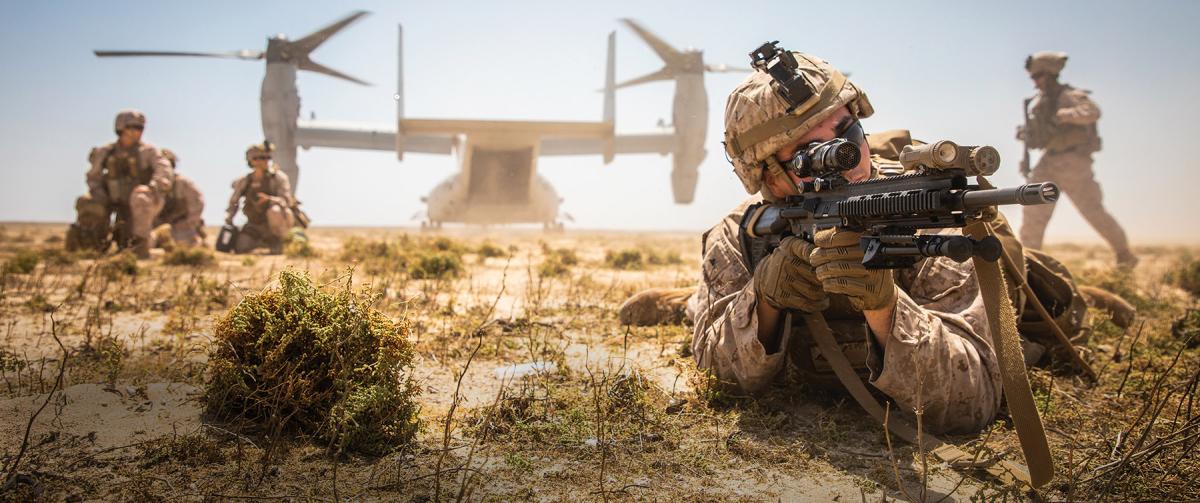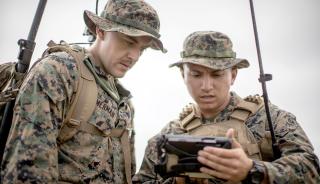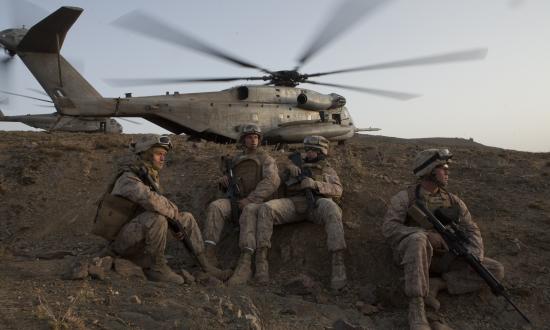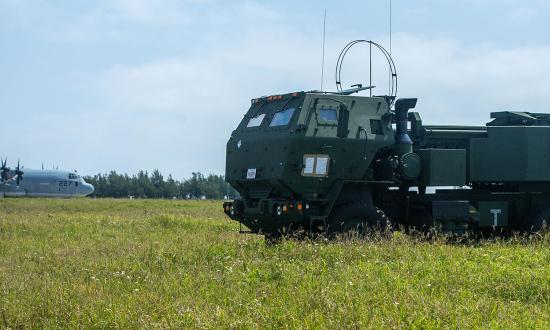Perhaps nothing is more emblematic of the Marine Corps and its unique way of warfighting than the Marine air-ground task force (MAGTF). The synergistic combination of ground, air, and logistics combat elements under a single commander has placed many an enemy on the horns of a combined-arms dilemma. However, times—and warfare—are changing. As then–Joint Chiefs Chairman and former Marine Commandant General Joseph Dunford explained in 2018, “Advancements in space, information systems, cyberspace, electronic warfare, and missile technology have accelerated the speed and complexity of war. As a result, decision space has collapsed, and we can assume that any future conflict will involve all domains and cut across multiple geographic regions.”1
For the Marine Corps to be ready for these types of conflict, it must do more than put grunts ashore and helos overhead. Already, the ability of the service’s tactical task force to operate in areas such as cyber, space, and the information environment is the force’s center of gravity, but the Marine Corps must expand its capabilities in these emerging domains and better integrate them for use in the field. It can start by evolving the MAGTF to the TF-MAGIC: the Marine Air-Ground Information-Cyber Task Force.
What’s In A Name?
Some may think a name change is just tinkering at the edges, but this is more than rearranging the deck chairs. The terms used to describe things matter, especially something as critical to the Marine Corps’ warfighting ethos as its fundamental tactical task force. Names help denote priorities, establish legitimacy and authority, and can be an essential aspect of storytelling when they encourage an institution to deliver on the promises implicit in the name.2
U.S. Pacific Command’s name change is one example. Since its creation in 1947, the combatant command headquartered at Camp H. M. Smith, Hawaii, had been known as USPaCom. In 2018, the nation’s oldest and largest unified combatant command added the prefix “Indo-” to its name, in recognition of the growing importance of the Indian Ocean region in global affairs and in response to trends in its operating environment. The change to U.S. Indo-Pacific Command sent a message to regional competitors such as China. Perhaps more important, it better aligned the command’s name with the entirety of its mission. Adopting TF-MAGIC would accomplish the same objectives for the Marine Corps.
Names also have a strong link to organizational identity. Facing the challenges brought about by the changing character of warfare, the Marine Corps is undergoing an identity shift that might be its most profound since the post–Civil War era. At that time, leaders had to move the service from being seen as little more than the Navy’s afloat police force to something more relevant to emerging issues. By branding itself as an elite force ready for any mission, the Marine Corps changed the way it presented itself, how the American public perceived it, and the way its enemies regarded it.
The Marine Corps should remain the nation’s “911 force,” with Marines forward postured in support of regional commanders, ready to rapidly aggregate and respond to national crises.3 But TF-MAGIC sends a message of more than grunts and airplanes—it is also cyber operations to protect and attack, robust intelligence support, and operations in the information environment to influence and shape public opinion and potential adversaries. It is cutting edge, forward-focused, and goes beyond fondly recalling the service’s history.4
Projecting such an image could open a new line of appeal to potential recruits. A greater organizational focus on areas such as information and cyber operations could be a boon for recruiting young Americans who want to serve their country but seek something different from the traditional elite warfighter role.
In addition, the new tagline could enlighten joint force planners about the broader variety of capabilities they can expect from Marine Corps elements. The time has come to rebrand the Marine Corps’ tactical warfighting task forces to better reflect the all-domain capabilities they have long brought to the table.
Making the MAGIC
TF-MAGIC, by expanding and further integrating the capabilities of the Marine Corps’ tactical task forces in electronic warfare, cyber operations, signals intelligence, information operations, and influence activities, would enhance the Marine Corps’ relevance in the contemporary battlespace. It can do this, first, by further leaning on the capabilities of the radio battalions, which encompass signals intelligence, ground electronic warfare, cyberspace operations, and electromagnetic spectrum operations.5
“It’s not just about destroying targets anymore,” noted a former commander of the Marine Corps Information Operations Center. “It’s ‘What is the enemy thinking right now? I need him to think this for the next hour.’”6
Successful integration of military information support operations, technical information operations, and other specialized capabilities at all levels and from the start of planning for any operation could change how the Marine Corps wins battles—perhaps without firing a single bullet.
This proposal is really about changing the organizational mindset, continuing to move away from legacy capabilities, and preparing for near-peer threats operating in all domains and across regional boundaries. TF-MAGIC could help the Marine Corps get where it needs to be in the air, on the ground, in cyberspace, and operating in the information environment.
The name MAGTF was adequate in the past, but it fails to tell the entire story of even today’s capabilities. TF-MAGIC places the institution’s focus firmly on where the Marine Corps needs to be in the future.







